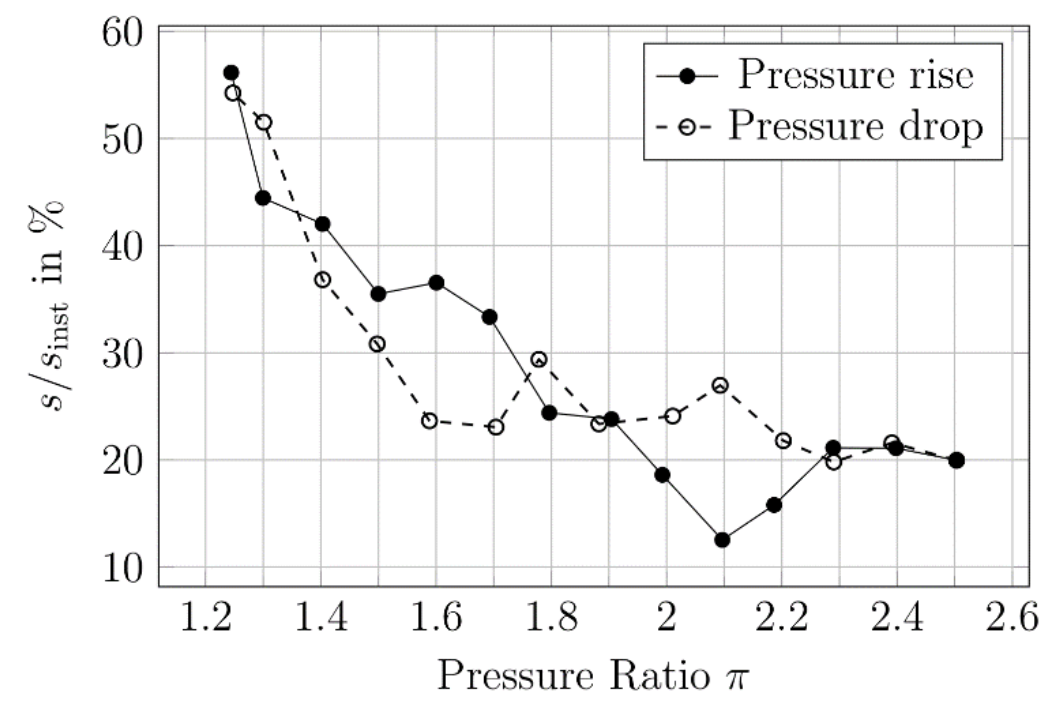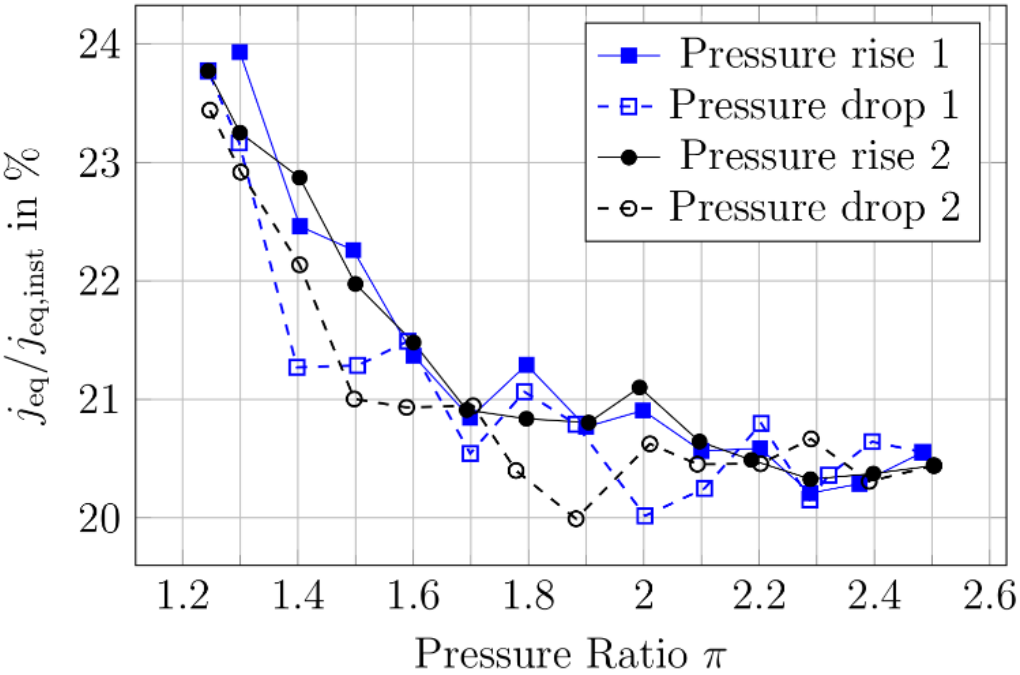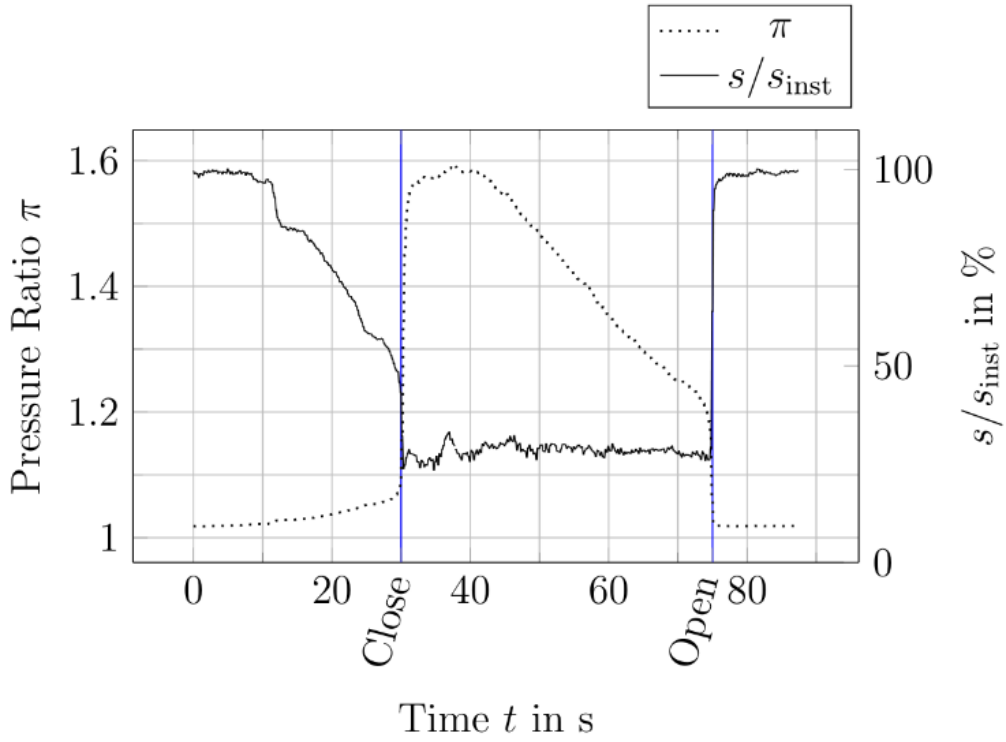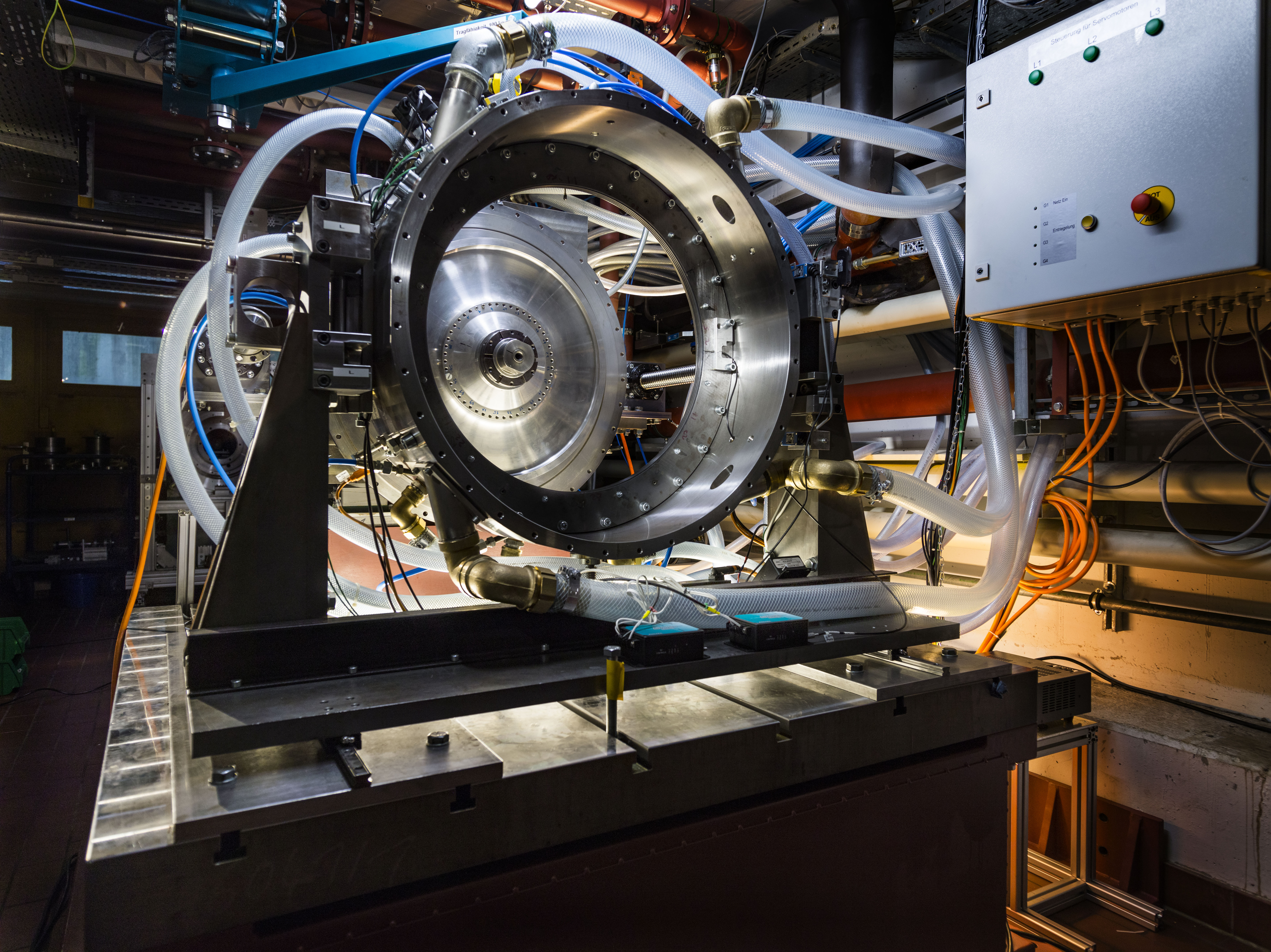Optimization of adaptive sealing systems
The secondary air system in modern gas and steam turbines is closely interlinked with almost all components and has a significant influence on machine efficiency. With the help of highly efficient cooling and sealing concepts, the maximum turbine inlet temperatures and pressure ratios can be further increased. For this reason, adaptive sealing systems are investigated experimentally[1],[2 ] and numerically[3 ] at the Institute of Thermal Turbomachinery. Experimental investigations form the basis for understanding the characteristic operating behavior of sealing systems in turbomachinery. In addition, numerical simulations provide a deeper insight into the aerodynamic effects and contribute significantly to the understanding of the overall operating behavior. The combination of experiment and simulation creates a physically validated digital twin with which the operating behavior can be predicted and the design process of sealing systems can be improved.
The sealing systems are examined experimentally on the test bench for adaptive seals. With the high-precision measurement technology, sealing gaps of 0.05 - 10 mm can be recorded highly dynamically. The data makes it possible to understand not only the stationary but also the transient behavior of adaptive seals, for example in the case of unbalance-excited vibrations. In combination with the variable boundary conditions (speed, pressures or pre-swirl), a wide range of operating conditions can be comprehensively investigated.
Research objectives
- Investigation of novel static and dynamic sealing systems
- Description of the stationary and transient operating behavior
- Further development and adaptation of measurement technology for high-precision dynamic recording of the sealing gap
- Validation and further development of calculation methods for the design of sealing systems
Operating behavior of adaptive seals
Conventional labyrinth seals are designed for a specific gap width. During operation, however, relative deformations between the housing and rotor result in different sealing gap widths depending on the operation of the machine. Leakage increases as the gap width increases and leakage is reduced as the gap width is reduced. In extreme cases, either too much air flows through the seal or too little. Particularly where labyrinth seals regulate the cooling air mass flow, too little leakage can lead to a collapse in cooling and ultimately to failure of the entire machine.
Adaptive seals are characterized by virtually contact-free and therefore low-wear operation. A typical curve of the gap width s with increasing or decreasing pressure ratio ![]() is shown in the following figure (left). The results from Beermann et al [2] show the initially comparatively large gap at low pressure ratios. As the ratio of upstream and downstream pressure increases, the gap widths decrease and stabilize at almost constant values (here around 20 %). The same applies to the leakage. The figure on the right shows the equivalent gap width, a measure of the seal leakage. The curve corresponds qualitatively to the development of the gap width. The gap width remains constant at the same pressure ratio and is independent of any relative movement between the rotor and the housing. This makes adaptive seals particularly interesting for use in turbomachinery.
is shown in the following figure (left). The results from Beermann et al [2] show the initially comparatively large gap at low pressure ratios. As the ratio of upstream and downstream pressure increases, the gap widths decrease and stabilize at almost constant values (here around 20 %). The same applies to the leakage. The figure on the right shows the equivalent gap width, a measure of the seal leakage. The curve corresponds qualitatively to the development of the gap width. The gap width remains constant at the same pressure ratio and is independent of any relative movement between the rotor and the housing. This makes adaptive seals particularly interesting for use in turbomachinery.


Transient behavior of adaptive seals
Adaptive seals are generally designed with a large installation gapin order to prevent the seal from coming into contact with the rotor. During operation, the seal moves automatically to a small gap width s, driven by the pressures applied. For radially adaptive seals, this is usually around 20% of the installation gap. For axially adaptive seals, significantly lower values of less than 2% can be achieved. An example of the transient gap change is shown in the following figure. The graph is taken from Beermann et al [2]. Recording the transient operating behavior enables a deeper understanding of the sealing system in critical operating conditions and promotes the further development of readout tools and calculation methods.

Sources:
[1] Beermann, L. S., Höfler, C. and Bauer, H.-J. (2015). "Design of a High-Speed Rotating Test Rig for Adaptive Seal Systems". In: ASME Turbo Expo 2015: Turbomachinery Technical Conference and Exposition . American Society of Mechanical Engineers.
[2] Beermann, L. S.; Wilhelm, J.; Höfler, C.; Bauer, H.-J. (2018). "Experimental Investigation of the Sealing Performance of a New Adaptive Seal System". Proceedings of GPPS Forum 18, Zurich, CH, January 10-12, 2018, Paper 005
[3] Beermann, L., Wilhelm, J., and Bauer, H. (2019). "Measurements and Modeling of the Movement Behavior of a Radial Adaptive Seal." ASME. J. Eng. Gas Turbines Power. November 2019; 141(11): 111011. https://doi.org/10.1115/1.4044970


